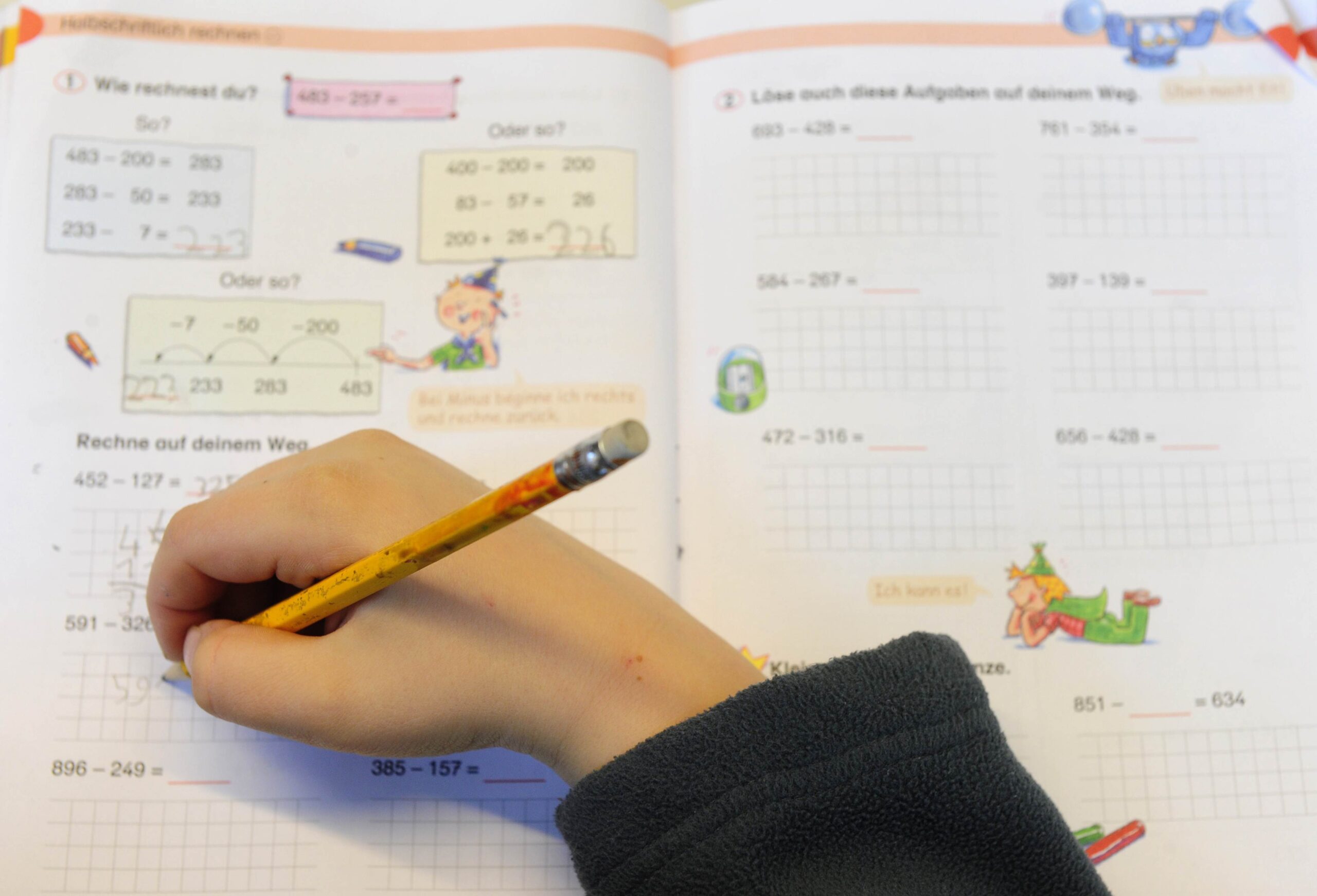Arm Training, Perfected
Bigger Biceps and Triceps, Less Time
Use these arm training strategies to build your biceps and triceps faster, all while spending less time in the gym.
Boost Your Arm Size the Smart Way
When you combine effort and consistency, lots of training methods work, but some are better than others for getting faster results. If you use these strategies, you won’t have to spend as much time in the gym, and you’ll build more size. Here’s how to optimize your training and accelerate your arm gains:
1. Do a Minimum of 15 Sets of Biceps and Triceps Per Week
Doing 12-20 total sets per muscle per week is a good rule of thumb for hypertrophy. I recommend getting at least 15 total sets per week for areas you’re looking to grow. For arm size, that means getting at least 15 sets of biceps and 15 sets of triceps.
If you’re already hitting that minimum, it’s time to add a few more total sets per week. Research shows that more sets per week per muscle usually means more muscle gains. Even doing 20-plus sets per muscle per week is fine.
However, you want to gradually increase the number of weekly sets instead of drastically increasing your sets overnight. Use the minimum effective dose.
2. Don’t Count Compound Exercises As Arm Work
Sure, biceps are involved in compound back exercises like chin-ups, lat pulldowns, and rows. And triceps are involved in compound chest exercises like bench press, dips, and push-ups. But how the arms are involved in most compound lifts doesn’t create sufficient adaptations to count toward arm volume.
For example, volume-matched bentover rows created only 50% of the biceps growth as curls. (1) So, thinking of your compound exercises as arm exercises, and doing reps that aren’t as effective as the direct work, will slow your development.
Now, the exception is pulldowns, pull-ups, and chin-ups because the biceps are worked a lot more. For example, volume-matched pulldowns created the same amount of biceps strength and size as barbell curls. (2) That said, combining both pulldowns and curls created superior biceps strength and size than if you only did curls or pulldowns. (3)
I still don’t count pulldowns, pull-ups, and chin-ups towards the total number of biceps sets, although you could justifiably do so. The added biceps volume they provide can only help.
3. Do Biceps on Chest Day, Triceps on Back Day
In my book, Strength Zone Training, the programs involve training biceps with chest in one workout and training triceps with back in another.
This can seem odd to lifters who love old-school training plans – the triceps are involved in many chest exercises, and the biceps are involved in many back exercises. On the surface, it makes sense to train triceps with chest and biceps with back to allow for sufficient recovery between workouts.
But the science now shows that higher training frequencies (hitting the same muscle multiple times per week) are just as effective, if not more effective, as training it once per week when the volume is matched. (4)
If you were to do 15 sets of biceps, then 5 sets three days per week is generally more effective for novice lifters than doing all 15 sets in one day. For advanced lifters, both approaches are about equal.
The takeaway: The higher frequency you get from hitting your arms more often by pairing biceps with chest in one workout and triceps with back in another won’t negatively impact your gains. But it can have a positive impact on accelerating arm growth.
Now, frequency is only a part of the muscle-building equation. Volume is another crucial part. The research clearly shows more weekly volume on a muscle equals more muscle growth.
That said, gradually adding more volume means adding more sets. And that means making your workouts progressively longer, which is unrealistic when you have limited time to train.
The solution to being able to do more sets without having to spend more time in the gym? Pair up chest exercises with biceps exercises and back exercises with triceps exercises. The next section explains why.
4. Do Paired-Sets Like This
Rest strategically between exercises when doing a paired set. Paired set? Yes, it’s not a superset where you go immediately from one exercise to the other. A paired set includes a brief rest period between the exercises.
Research shows that paired-set training is more effective than traditional-set training at enabling lifters to handle more volume. (5) But it shouldn’t take researchers to see that paired sets are a perfect training strategy for anyone who wants to get the most out of their workout time and maximize gains.
Here are a few sample paired sets, followed by details of why this approach is more efficient:
Back and Triceps
| Exercise | Sets | Reps | Rest | |
|---|---|---|---|---|
| A1. | Chin-Up or Underhand-Grip Lat Pulldown | 3 | 12 | 1 min. |
| A2. | Dumbbell Behind the Head Triceps Extension | 3 | 12 | 1 min. |
| B1. | Dumbbell One-Arm Row | 3 | 12 | 1 min. |
| B2. | Dumbbell Triceps Skull-Crusher | 3 | 12 | 1 min. |
Chest and Biceps
| Exercise | Sets | Reps | Rest | |
|---|---|---|---|---|
| A1. | Dumbbell Incline Press | 3 | 12 | 1 min. |
| A2. | Dumbbell Biceps Curl | 3 | 12 | 1 min. |
| B1. | Feet Elevated Push-Up | 3 | Max | 1 min. |
| B2. | EZ-Bar Preacher Curl | 3 | 12 | 1 min. |
A review of the research shows that resting 3-5 minutes between sets produced greater increases in strength by allowing your body ample time to recover. Likewise, higher levels of muscular power were demonstrated over multiple sets with 3-5 minutes of rest versus one minute of rest between sets. (6)
With that in mind, let’s say you do each exercise with a one-second concentric (lifting) portion of each rep and a three-second eccentric (lowering). That means each rep takes four seconds. Four seconds times 12 reps means a set of one exercise takes about 48 seconds to complete. (By the way, a three-second lowering phase produces more arm growth than a one-second lowering phase.) (7)
- A1. Chin-Up or Underhand-Grip Lat Pulldown: Time = 48 seconds per set. Rest time = 1 minute
- A2. Dumbbell Behind the Head Triceps Extension: Time = 48 seconds per set. Rest time = 1 minute
Although you’re only resting one minute between exercises in each paired set, you’re getting two minutes and 48 seconds between doing sets of the same exercise. That’s barely shy of the full three minutes of rest between sets of the same muscle group, which is needed to maximize gains.
Furthermore, to complete one full paired set of the above exercises it takes three minutes and 36 seconds. So, to complete all three sets of one paired set, it would take you 10 minutes and 48 seconds.
Now, let’s compare that to how long these same two exercises would take with the traditional training approach:
- Chin-Up or Underhand-Grip Lat Pulldown: 3 sets x 12 reps (with 2 minutes and 48 seconds rest between sets)
- Dumbbell Behind the Head Triceps Extension: 3 sets x 12 reps (with 2 minutes and 48 seconds rest between sets)
If you did each exercise individually, it would take 21 minutes and 36 seconds to get through all three sets of both exercises. That’s double the training time for no additional benefit.
Even if you’re not in a rush, spending less time doing certain exercises means you’ve got more time to spend on others. In this case, you have more time to do additional upper-body and arm exercises to get more volume.
5. Do Non-Interfering Exercise Pairs for Faster Arm Gains
The problem with the traditional approach of training triceps with chest and biceps with back is that you can’t do effective paired sets. When pairing exercises, you don’t want to exhaust the same muscles on both exercises because it interferes with your recovery and performance. So, the second exercise in your paired set should be for a different muscle group than the first exercise.
This means you want to choose non-interfering exercises as your paired sets. Biceps exercises are non-interfering to chest exercises. Triceps exercises are non-interfering to back exercises.
Choosing non-interfering exercises allows you to rest longer between sets of the same muscle group while maximizing your overall training time by doing a set targeting a different muscle group. You’re using the second exercise to help with recovery from the first one. You can then work harder in subsequent sets.
By the time you get back to training the same muscle group on the following set, it’s been several minutes, leaving those muscles plenty of time to fully recover and get ready to exert maximal intensity with every set.
So, it’s smarter to train biceps with chest and triceps with back. You can get more weekly arm volume and do more work in the same amount of time, all without compromising anything or requiring more rest and recovery between workouts.
References
References
- Mannarino P et al. Single-Joint Exercise Results in Higher Hypertrophy of Elbow Flexors Than Multijoint Exercise. J Strength Cond Res. 2021 Oct 1;35(10):2677-2681. PubMed.
- Gentil P et al. Single vs. Multi-Joint Resistance Exercises: Effects on Muscle Strength and Hypertrophy. Asian J Sports Med. 2015 Jun;6(2):e24057. PMC.
- Gentil P et al. Effect of adding single-joint exercises to a multi-joint exercise resistance-training program on strength and hypertrophy in untrained subjects. Appl Physiol Nutr Metab. 2013 Mar;38(3):341-4. PubMed.
- Schoenfeld BJ et al. How many times per week should a muscle be trained to maximize muscle hypertrophy? A systematic review and meta-analysis of studies examining the effects of resistance training frequency. J Sports Sci. 2019 Jun;37(11):1286-1295. PubMed.
- Robbins DW et al. The effect of an upper-body agonist-antagonist resistance training protocol on volume load and efficiency. J Strength Cond Res. 2010 Oct;24(10):2632-40. PubMed.
- de Salles BF et al. Rest interval between sets in strength training. Sports Med. 2009;39(9):765-77. PubMed.
- Pereira PE et al. Resistance training with slow speed of movement is better for hypertrophy and muscle strength gains than fast speed of movement. Int J Appl Exerc Physiol. 2016 Jul;5(5):37-43.
T Nation earns from qualifying purchases as an Amazon Associate. Read more about our policy.
" Conservative News Daily does not always share or support the views and opinions expressed here; they are just those of the writer."








